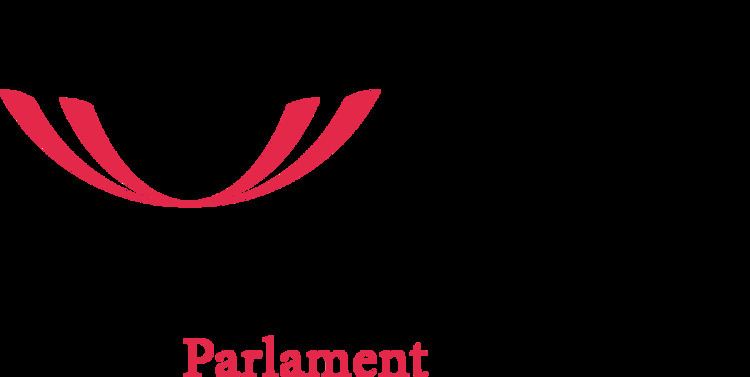Seats 183 | ||
 | ||
Second President Karlheinz Kopf, ÖVPSince 2 August 2014 Third President Norbert Hofer, FPÖSince 29 October 2013 Nationalrat political groups Government (102): SPÖ (52) ÖVP (50)Opposition (81): FPÖ (38) Grüne (24) Team Stronach (6) NEOS (9) Independent (4) | ||
The National Council (Nationalrat) is one of the two houses of the Austrian Parliament and is frequently referred to as the lower house. The constitution endows the National Council far more power than the Federal Council.
Contents
Responsibilities
The National Council is where Austria's federal legislative authority is concentrated; for a bill to become federal law, it must be resolved upon by this chamber. Bills passed by the National Council are sent to the Federal Council for corroboration. If the Federal Council approves of the bill or simply does nothing for eight weeks, the bill has succeeded. If the Federal Council vetoes the bill, the National Council may still force it into law by essentially just passing it again; a National Council resolution overruling a Federal Council objection merely has to meet a higher quorum than a regular resolution. In other words, the Federal Council does not have any real power to prevent adoption of legislation, the National Council being trivially able to override it. There are three exceptions to this rule:
The approval of the National Council is also required for most of the prerogatives of the Federal Assembly to be exercised. For example, motions to call for a referendum aimed at having the President removed from office by the electorate, and motions to declare war all need a two-thirds majority in the National Council. Only motions to impeach the President can also be from the Federal Council.
Elections
The 183 members of the National Council are elected by nationwide popular vote for a term of five years; each Austrian sixteen years or older on the day the election takes place is entitled to one vote. National Council elections are general elections. The voting system aims at party-list proportional representation, uses partially open lists, and is relatively straightforward:
In addition to voting for a party list, voters may express preference for one individual candidate. A candidate receiving sufficiently many personal votes can rise in rank on his or her district party list; voters thus have a certain degree of influence as to which particular individual wins which particular seat. It is not possible, however, to simultaneously vote for party X but exert influence on the candidate rankings on the party list of party Y.
Peculiarities
Austria's federal constitution defines Austria to be a semi-presidential democracy: the executive branch of government is supposed to be headed by the President but also be answerable to the legislative branch. In practice, however, Austria's President plays no role in the administration, which is left to the Chancellor and Cabinet, which are dependent on the confidence of the National Council. While the President has the theoretical authority to dissolve a hostile National Council, constitutional convention prevents this power from being exercised except on the advice of the Chancellor. Austria accordingly functions as a parliamentary democracy: for all intents and purposes, the cabinet is subject to approval by the National Council, the president being little more than a figurehead.
A related discrepancy between Austrian constitutional theory and Austrian political practice is that the constitution defines the President of the National Council to be Austria's second highest public official, junior only to the president proper. As a practical matter, the President of the National Council is a representative of rather moderate significance: wielding less power than the president by extension means wielding less power than the Chancellor or even most federal ministers. The President of the National Council thus serves mostly as a more or less nonpartisan moderator of parliamentary debate.
Current Make-up of the National Council
Four members switched from Team Stronach to ÖVP; another one became independent. Two members left FPÖ to become unattached as well.
